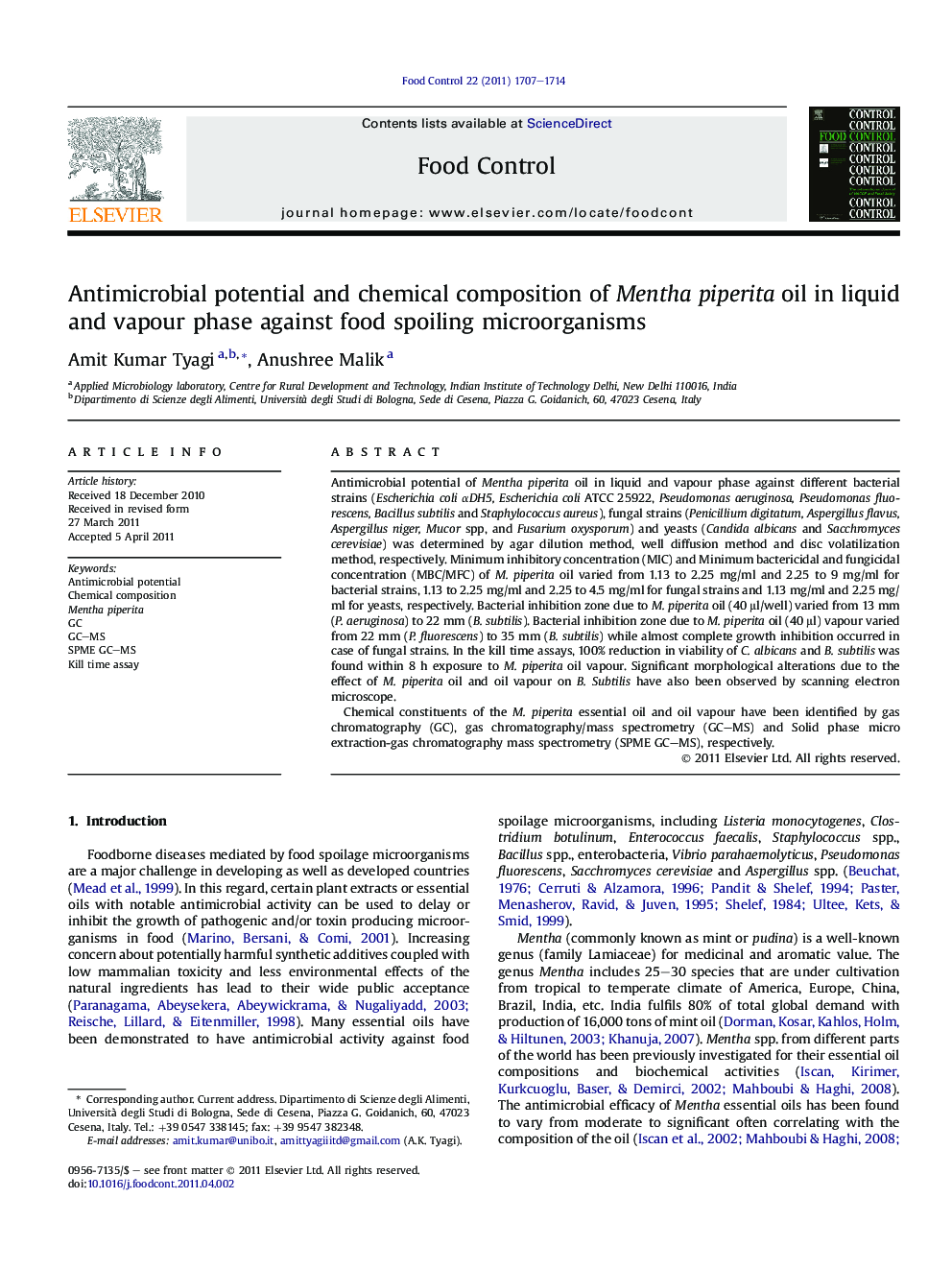| Article ID | Journal | Published Year | Pages | File Type |
|---|---|---|---|---|
| 4559521 | Food Control | 2011 | 8 Pages |
Antimicrobial potential of Mentha piperita oil in liquid and vapour phase against different bacterial strains (Escherichia coli αDH5, Escherichia coli ATCC 25922, Pseudomonas aeruginosa, Pseudomonas fluorescens, Bacillus subtilis and Staphylococcus aureus), fungal strains (Penicillium digitatum, Aspergillus flavus, Aspergillus niger, Mucor spp, and Fusarium oxysporum) and yeasts (Candida albicans and Sacchromyces cerevisiae) was determined by agar dilution method, well diffusion method and disc volatilization method, respectively. Minimum inhibitory concentration (MIC) and Minimum bactericidal and fungicidal concentration (MBC/MFC) of M. piperita oil varied from 1.13 to 2.25 mg/ml and 2.25 to 9 mg/ml for bacterial strains, 1.13 to 2.25 mg/ml and 2.25 to 4.5 mg/ml for fungal strains and 1.13 mg/ml and 2.25 mg/ml for yeasts, respectively. Bacterial inhibition zone due to M. piperita oil (40 μl/well) varied from 13 mm (P. aeruginosa) to 22 mm (B. subtilis). Bacterial inhibition zone due to M. piperita oil (40 μl) vapour varied from 22 mm (P. fluorescens) to 35 mm (B. subtilis) while almost complete growth inhibition occurred in case of fungal strains. In the kill time assays, 100% reduction in viability of C. albicans and B. subtilis was found within 8 h exposure to M. piperita oil vapour. Significant morphological alterations due to the effect of M. piperita oil and oil vapour on B. Subtilis have also been observed by scanning electron microscope.Chemical constituents of the M. piperita essential oil and oil vapour have been identified by gas chromatography (GC), gas chromatography/mass spectrometry (GC–MS) and Solid phase micro extraction-gas chromatography mass spectrometry (SPME GC–MS), respectively.
